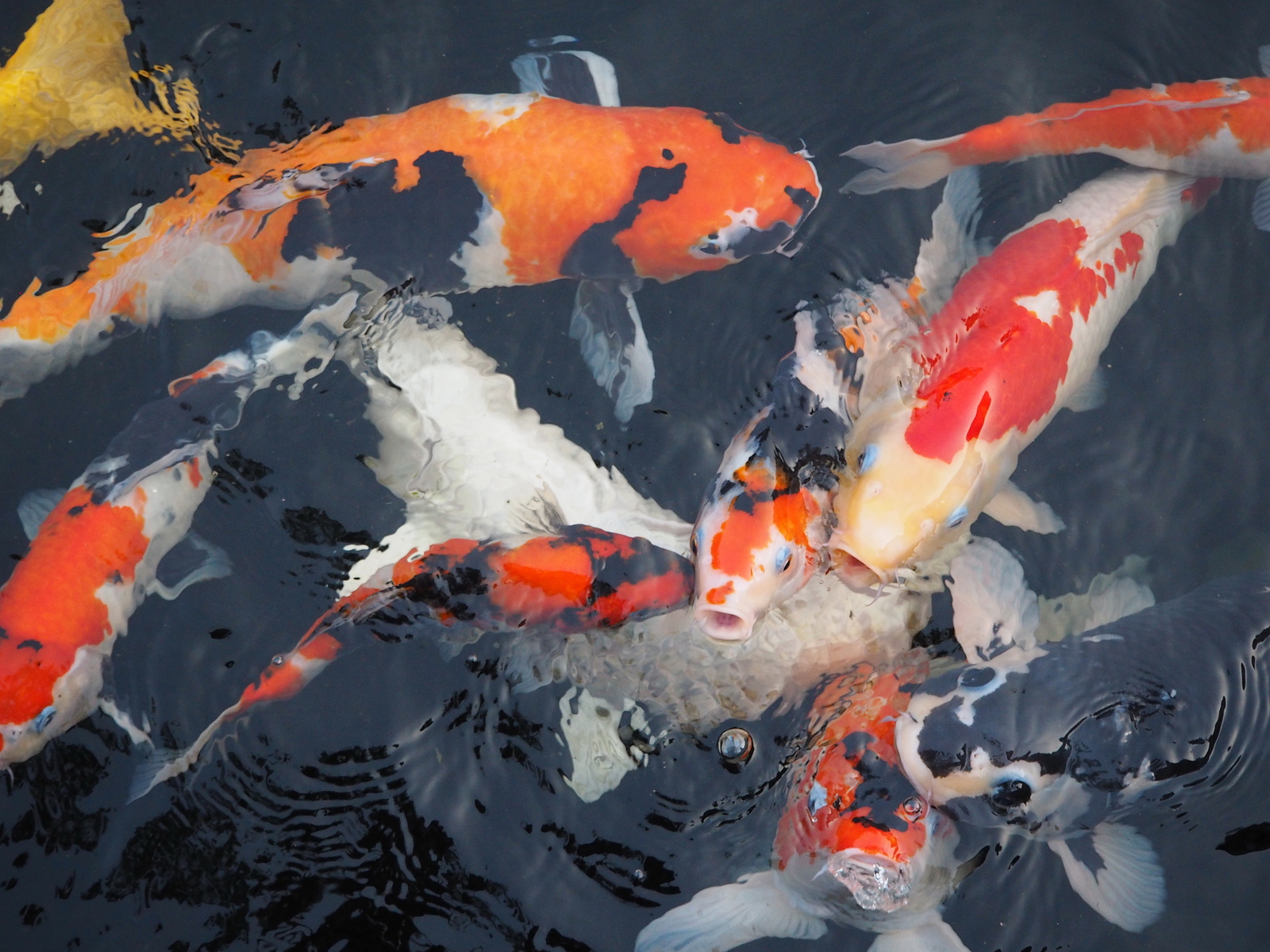Pacific Pond and Aquarium are experts in the examination, care and treatment of Koi. We are happy to come out and help you with your Koi Pond and any issues you may be having. Here are some tips for keeping your Koi healthy and how to know when they may not be feeling their best.
Start by observing how your Koi swim from a distance since they expect food and will get excited if they see you. Otherwise, even sick Koi may follow the school and look normal. Next, feed and observe them. Check if every Koi comes up to eat like usual. Are any Koi left alone? Check their body carefully, sides, bottom and inside mouth. If they do not finish the normal amount of Koi food, this is a good sign that they may be having health issues.
Grouping – Koi swims separated from the group, stays at the corner or the bottom of the pond, floats near the water surface, or swims lethargically around the waterfall/return water pipe or the drain outlet/skimmer.
Possible cause: Likelihood of bacterial disease.
Flashing – Koi rubs against the wall or bottom of the pond, hits against the wall, jumps out of the water surface, shakes its abdomen, or swims erratically.
Possible cause: Often caused by parasites.
Appetite – Observe the entire group of Koi during feeding. Pay careful attention to any new Koi that are not coming up to eat. Check for any leftover food in the pond.
Possible cause: If any abnormalities are observed when the water temperature is between 64°C (18°C) and 81°F (27°C), an increase of ammonia or nitrite level, parasites or bacterial infection, visceral disease, or oxygen deficiency.
Body – Observe carefully for the following symptoms; congestion of fins or abdomen, tumor, ulcer, color abnormality, abnormal body surface such as cloudy spots, weakness, swelling, deformation, pop-out or sunken eyeball, injury, parasites, raised scales, abnormal breath, excrescence, protrusion, swollen gill cover, holes or eroding pits etc.
Possible cause: Poor water quality, bacteria, parasites, poor feeding, Koi Pox (virus)
Types of Parasites – Trichodina and Flukes – Affected Koi often exhibit classic signs of irritation and flash, jump or rub themselves against objects in the pond in an attempt to rid themselves of their attackers. Parasites should be positively identified with a microscope, to ensure proper treatment.
Flukes are not visible with the naked eye. When viewed under a microscope, the parasites are clearly visible as nearly transparent and worm like, and the hooks are clearly visible. Flukes are a bit like fleas on dogs and cats and it is common to see one or two on a slide as a healthy Koi can control parasite numbers and their mucus helps prevent the parasite moving. Treatment is therefore only necessary if flukes are seen in numbers. Koi are affected by skin flukes, and gill flukes. Proper identification is necessary to ensure proper treatment.
Trichodina is one of the easiest protozoan parasites to detect under the microscope as it is almost perfectly round with hundreds of hooks which resemble cilia found its periphery and it constantly rotates as it moves through the mucus, causing tissues damage. It attacks both skin and gill tissues of our Koi, and can often cause more damage to gills than realized. Classed as a warm water parasite, it can survive for some time without a host. It causes vegetation of the skin giving rise to a grey white opaque appearance on the body of infected Koi which exhibit the classic symptoms of flashing, rubbing and lethargy.
Other Parasites include Ich, fish lice, anchor worm.

Before 1 
Before 2 
Before 3 
After – 1 week of antibiotic baths, using Baytril, 5 hours per day 
After 2
Feces/Waste – Observe feces or waste if they are floating in the pond, are gelatinous or have abnormal / clear color. Normally feces should sink and dissolve in the water right away.
Possible cause: Indigestion from scraped intestinal lining.
Water Quality – Clear water is what we all want to see for our koi. Cloudy water can have many causes, some problematic for koi, some not. Green water from algae blooms, can be lethal to koi under certain conditions, but is normally not a big issue. Water quality inspection and testing to measure the level of pH, Alkalinity, ammonia, and nitrite is a first step any time a health issue arises. Water quality is the single most important factor in you koi health.
Possible cause: If abnormal water parameters are detected, check for deficient filtration, sludge buildup, shortage of new water, oxygen deficiency, overcrowding, or overfeeding.
Contact Us for more information or to book an appointment for us to treat your Koi fish.

